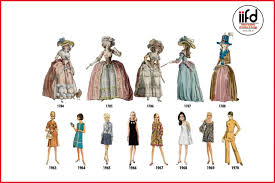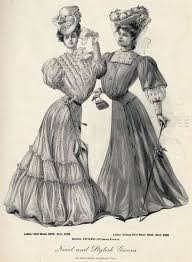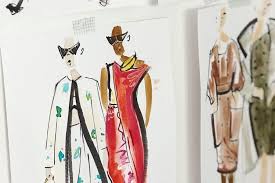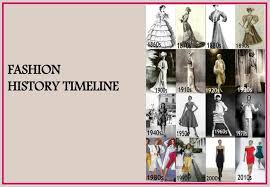The History and Evolution of Fashion: A Journey Through Time
Fashion is a dynamic and ever-changing aspect of human culture, reflecting societal norms, technological advancements, and artistic movements. The evolution of fashion encompasses a rich tapestry of styles, materials, and influences that have transformed how we dress and express ourselves. This article explores the history of fashion from ancient times to the contemporary era, highlighting key developments, influential figures, and cultural shifts that have shaped the world of clothing and personal expression.
Ancient Civilizations: The Birth of Fashion
Mesopotamia and Egypt
Fashion can trace its roots back to ancient civilizations, where clothing was not only a necessity for protection but also a reflection of social status and identity. In Mesopotamia (circa 3500-500 BCE), clothing was made from wool and flax, with garments often decorated with intricate embroidery. The Sumerians, for example, wore long tunics and fringed shawls, while the wealthy adorned themselves with jewelry and elaborate headdresses.
In ancient Egypt, fashion was closely tied to social hierarchy and religious beliefs. Linen was the primary fabric, and garments such as kilts and tunics were common. The wealthy adorned themselves with gold jewelry, while pharaohs wore intricate headdresses and garments signifying their divine status. Clothing in Egypt also had practical implications, helping individuals stay cool in the hot climate.
Greece and Rome
In ancient Greece (circa 800-146 BCE), clothing became more sophisticated, with garments like the chiton and himation allowing for greater expression of individual style. Greek fashion emphasized draping and layering, showcasing the body’s form while allowing for freedom of movement. The Romans (circa 753 BCE-476 CE) adopted many aspects of Greek fashion but added their own elements, such as the toga, which became a symbol of Roman citizenship.
Roman fashion also introduced the concept of ready-to-wear garments, as tailors began producing clothing for the masses. This period saw the emergence of fashion as a status symbol, with wealthy citizens flaunting elaborate styles and accessories.
The Middle Ages: Fashion in Transition
The Middle Ages (circa 500-1500 CE) marked a significant shift in fashion, influenced by factors such as religion, feudalism, and trade. Clothing became more utilitarian, reflecting the social and economic conditions of the time.
Early Middle Ages
During the early Middle Ages, garments were typically simple and functional. Men wore tunics and trousers, while women donned long dresses with fitted bodices. The use of wool and linen was common, with natural dyes providing color.
High Middle Ages
By the high Middle Ages, fashion became more elaborate, influenced by the rise of the merchant class and increased trade with the East. Fabrics such as silk and brocade began to appear, leading to more ornate garments. The introduction of fitted clothing, including the corset and tailored jackets, marked a shift toward more structured silhouettes.
The Gothic style emerged during this period, characterized by long, flowing garments and intricate embroidery. The use of luxurious fabrics and embellishments became a way to display wealth and status.
The Renaissance: A Flourishing of Style
The Renaissance (14th to 17th centuries) was a pivotal period in the history of fashion, marked by a renewed interest in art, culture, and individual expression. This era saw the rise of tailored clothing, vibrant colors, and intricate designs.
Key Developments
- Tailoring and Fit: Tailoring became an art form, with garments crafted to fit the body more precisely. The introduction of patterns and designs allowed for greater customization.
- Fabrics and Colors: Wealthy individuals began to wear richly colored fabrics, such as velvet and silk, often adorned with embroidery and jewels. The use of dyes became more advanced, leading to a wider palette of colors.
- Fashion Icons: Figures like Catherine de’ Medici and Elizabeth I of England set trends through their elaborate gowns and extravagant accessories. These individuals influenced not only clothing styles but also social norms regarding fashion.
Impact on Society
The Renaissance’s emphasis on individualism and personal expression laid the groundwork for fashion as a means of identity and social status. As clothing became more symbolic of wealth and prestige, the desire to stay fashionable led to the emergence of fashion as a cultural phenomenon.
The Baroque and Rococo Eras: Opulence and Extravagance
The Baroque (17th century) and Rococo (18th century) periods were characterized by opulence and theatricality in fashion. These eras embraced extravagant designs, intricate patterns, and lavish fabrics.
Baroque Fashion
Baroque fashion was marked by elaborate silhouettes, including wide skirts for women and ornate suits for men. Fabrics such as brocade, lace, and silk were commonly used, with an emphasis on bold patterns and embellishments. The period’s fashion reflected the power and wealth of monarchies, with elaborate costumes worn by the aristocracy.
Rococo Fashion
The Rococo period brought even more exuberance to fashion, characterized by pastel colors, delicate fabrics, and ornate details. Women’s dresses featured wide panniers that created an exaggerated silhouette, while men donned fitted coats with decorative embellishments. This era also saw the rise of fashion magazines, which helped disseminate trends and styles across Europe.
The Industrial Revolution: The Birth of Mass Production
The Industrial Revolution (18th to 19th centuries) brought profound changes to fashion, transforming how clothing was produced and consumed. Advances in textile manufacturing and sewing technologies enabled the mass production of garments.
Key Changes
- Ready-to-Wear Clothing: The introduction of ready-to-wear clothing revolutionized fashion, making it accessible to a broader audience. Clothing was no longer solely custom-made for the wealthy.
- Fashion Houses: The establishment of fashion houses, such as Charles Frederick Worth in the mid-19th century, marked the emergence of the designer as a significant figure in the fashion industry. Worth’s collections showcased luxurious garments, and he is often credited with creating the concept of the fashion show.
- Department Stores: The rise of department stores in the late 19th century further democratized fashion, allowing consumers to browse a variety of styles in one location.
Social Impact
The Industrial Revolution also influenced social norms and gender roles. Women began to enter the workforce, leading to changes in clothing styles that emphasized practicality and comfort. The invention of the sewing machine allowed for more affordable clothing options, altering perceptions of fashion.
The 20th Century: Innovation and Subculture
The 20th century was a period of rapid change in fashion, driven by cultural movements, technological advancements, and shifts in societal norms.
The Roaring Twenties
The 1920s, known as the Roaring Twenties, brought about a revolution in women’s fashion. The flapper style emerged, characterized by short hemlines, loose silhouettes, and daring designs. Women began to embrace a more liberated lifestyle, reflected in their clothing choices. Iconic figures like Coco Chanel challenged traditional notions of femininity with stylish, functional designs.
Mid-Century Fashion
The 1940s and 1950s saw a return to femininity, with hourglass silhouettes emphasized by corsets and structured garments. Designers like Christian Dior introduced the “New Look,” featuring cinched waists and full skirts that celebrated traditional femininity.
The 1960s and 1970s: Counterculture and Individuality
The 1960s and 1970s were marked by countercultural movements that challenged societal norms. Fashion became a form of self-expression, with styles like mod, bohemian, and punk emerging. Iconic figures such as Twiggy and Andy Warhol influenced trends, while music festivals and youth culture played a significant role in shaping fashion.
The Influence of Technology
The late 20th century witnessed significant technological advancements that impacted fashion. The introduction of synthetic fabrics, such as polyester, allowed for innovative designs and greater affordability. The rise of global communication also enabled the spread of fashion trends across borders, leading to a more interconnected global fashion industry.
The 21st Century: Sustainability and Diversity
As we entered the 21st century, fashion continued to evolve in response to contemporary challenges and opportunities.
Sustainability and Ethical Fashion
Increasing awareness of environmental issues and ethical concerns has led to a demand for sustainable fashion. Brands are now prioritizing eco-friendly materials, ethical labor practices, and transparent supply chains. Consumers are becoming more conscious of their choices, seeking out brands that align with their values.
Diversity and Inclusivity
The fashion industry has also seen a shift toward greater diversity and inclusivity. Brands are recognizing the importance of representing a wider range of body types, ethnicities, and gender identities. This has led to the rise of plus-size fashion, gender-neutral clothing, and campaigns that celebrate diverse beauty.
Digital Transformation
The digital age has transformed the fashion landscape, with online shopping becoming the norm. Social media platforms, particularly Instagram and TikTok, play a pivotal role in shaping trends and influencing consumer behavior. Influencer marketing and user-generated content have changed how brands connect with their audiences.
The Future of Fashion
Looking ahead, the future of fashion is likely to be characterized by continued innovation and adaptation. Technology, such as virtual reality and augmented reality, is reshaping the shopping experience, while advancements in sustainable materials and production methods promise a more responsible approach to fashion.
Conclusion
The history and evolution of fashion is a reflection of human creativity, cultural shifts, and societal values. From the ancient civilizations that laid the foundation for clothing as a form of expression to the contemporary era’s focus on sustainability and inclusivity, fashion has continually adapted to meet the changing needs of society.
As we move forward, the interplay between fashion, technology, and cultural consciousness will shape the industry, making it essential for brands to stay attuned to emerging trends and consumer expectations. Ultimately, fashion will continue to be a powerful medium for self-expression and identity, influencing how we perceive ourselves.

